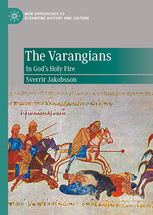So, it turns out that the Vikings not only traversed on the high seas but also went overland along rivers, not least in eastern Europe. These are among the conclusions in Dr Cat Jarman’s new book River Kings. Her riveting story starts with the Great Viking Army, depicted recently in popular TV shows such as The Vikings and The Last Kingdom, as they pummelled their way across eastern England. Left behind in Derbyshire during the rampage was a small orange bead. This was unearthed in 1982 and came into Dr. Jarman’s possession about ten years ago.
With the aid of the latest technology, she traces the origin of the bead through the rivers of present-day Russia and Ukraine and all the way back to Baghdad. It’s origin place seems to be across the Silk Roads in Gurajat in India. Using bioarchaeology, Jarman conclusively proves that the 9th Century world was in many ways interconnected and brought people as well as goods (many of whom were, in fact, people) from parts of Asia to Northern Europe and vice-versa, all written in an accessible and informative manner.
Dr. Jarman is currently involved with creating the eagerly anticipated new Viking museum in Oslo which is set to open in 2025. She also hosted the Real Vikings TV series on the History Channel. We can only hope than an Eastern Vikings museum will open some day. And perhaps a proper TV series is also overdue?
For more about the River Kings, see here:
And here:


